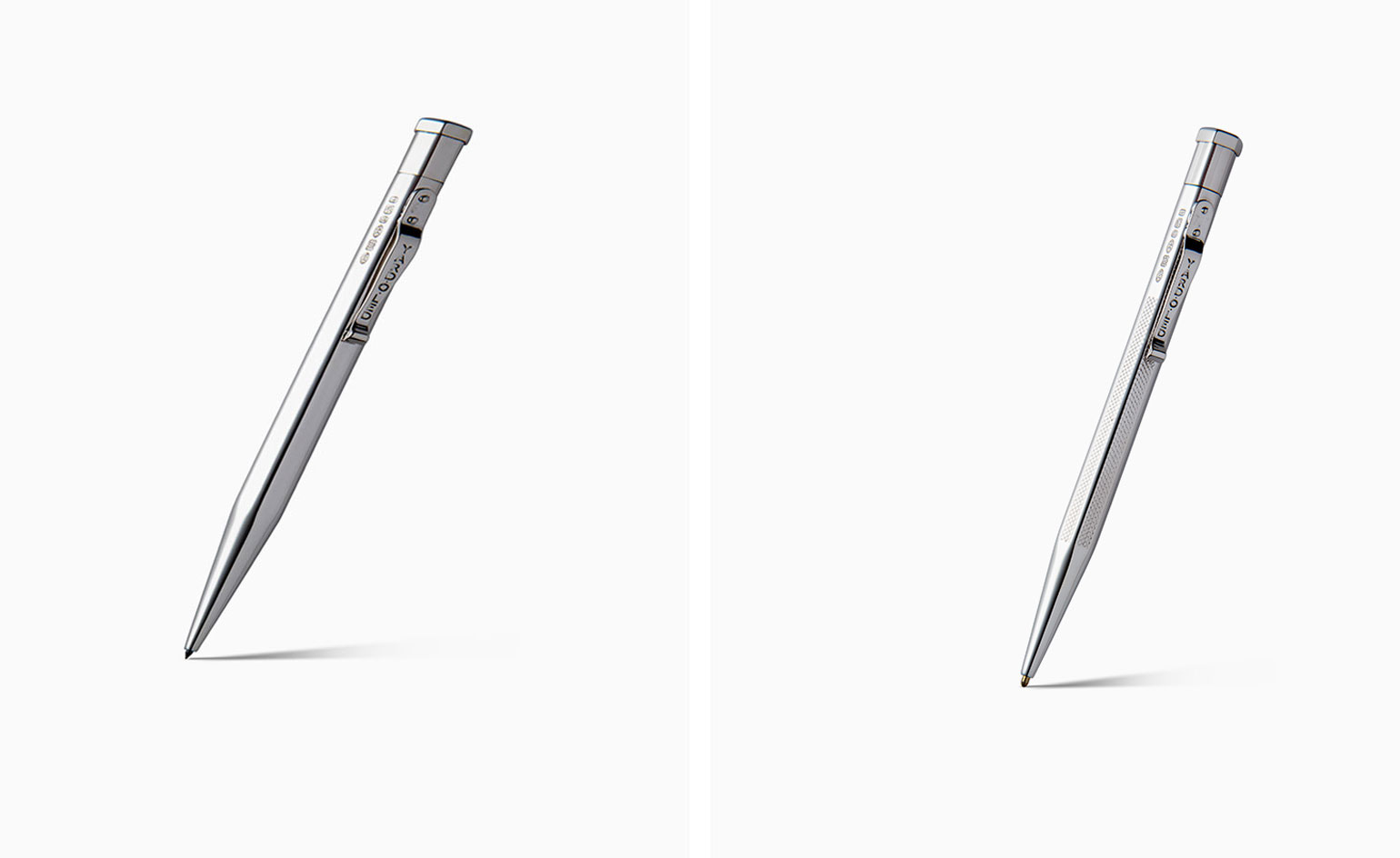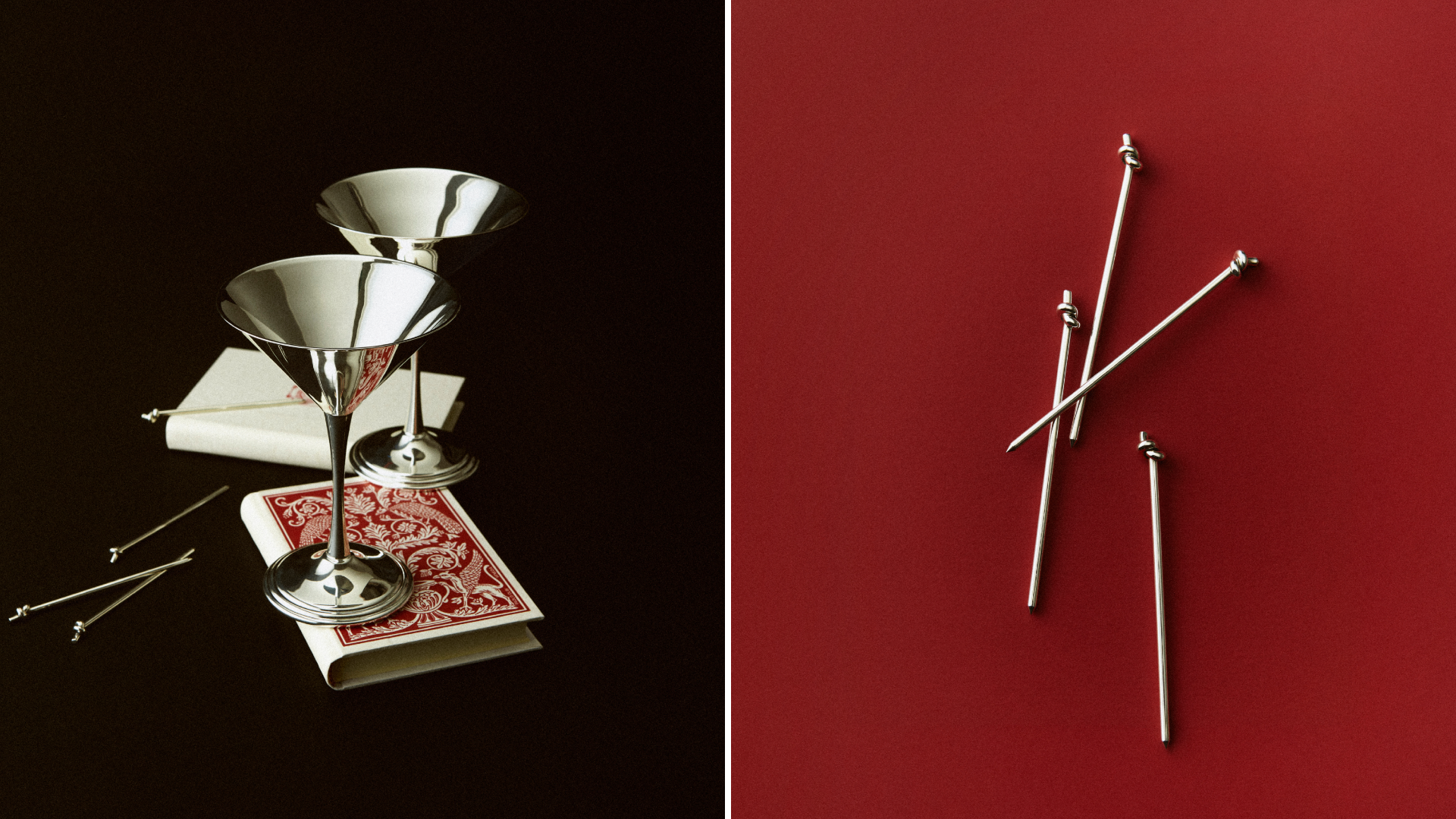Fountain of knowledge: Yard-O-Led’s silver pen and pencil designs flow with a rich history
Perennially modern, Yard-O-Led’s pen and pencil designs pay proud homage to Birmingham’s silversmithing design heritage

Now based in the city’s historic Jewellery Quarter, Yard-O-Led is steeped in a picaresque history of jewellery craftsmanship that includes early makers of silver buttons, medals, cutlery and trinkets. And, though the name has also been traded along the way, Yard-O-Led has been creating intricate silver writing instruments in Birmingham for over 200 years.

The engine turning machine, operated manually, finely works designs into the silver pieces
Today, the workshop comprises a small team of five silversmiths, who craft each part of every pen or pencil design between them, with three people working on one pencil from the start of the process to the finished product. ‘We have used the same traditional skills for the past 90 years,’ says workshop manager Alex Roden. ‘This means we can still repair pencils that are nearly 80 years old, as we still have the parts and the skills to return them back to full working order.’ The brand’s signature subtle engraving points directly to each craftsman’s artistic touch, so that the work is easily identified upon return for refurbishment.
We have used the same traditional skills for the past 90 years. We can still repair pencils that are nearly 80 years old.
Alex Roden
These intricate etchings – a Yard-O-Led design signifier – are made using antique chasing-punchers, which emboss the patterns into the silver. It is a laborious process, and not easily learned, as apprentices who have trained how to chase on a round barrel tool, practising on scrap silver for a year, have learned.
‘They practise until the master craftsman is happy with the pattern formation, depth of marks and development of the individuals’ decorative style,’ explains Roden. ‘We encourage each chaser to develop their own version of original Victorian patterns, whether it be an elaborate design or a change to the way the pattern echoes through the form.’ When approved, the craftsman carefully layers the pattern on to the pen barrel using different shapes while, with the lightest touch, the maker manipulates the chasing hammer to make his or her marks.

All parts of the making process take place in Yard-O-Led’s factory in Birmingham, from creating etchings, left, to polishing
INFORMATION
Receive our daily digest of inspiration, escapism and design stories from around the world direct to your inbox.
Hannah Silver is the Art, Culture, Watches & Jewellery Editor of Wallpaper*. Since joining in 2019, she has overseen offbeat art trends and conducted in-depth profiles, as well as writing and commissioning extensively across the worlds of culture and luxury. She enjoys travelling, visiting artists' studios and viewing exhibitions around the world, and has interviewed artists and designers including Maggi Hambling, William Kentridge, Jonathan Anderson, Chantal Joffe, Lubaina Himid, Tilda Swinton and Mickalene Thomas.
-
 The new Tudor Ranger watches master perfectly executed simplicity
The new Tudor Ranger watches master perfectly executed simplicityThe Tudor Ranger watches look back to the 1960s for a clean and legible design
-
 This late-night hangout brings back 1970s glam to LA’s Sunset Boulevard
This late-night hangout brings back 1970s glam to LA’s Sunset BoulevardGalerie On Sunset is primed for strong drinks, shared plates, live music, and long nights
-
 How Memphis developed from an informal gathering of restless creatives into one of design's most influential movements
How Memphis developed from an informal gathering of restless creatives into one of design's most influential movementsEverything you want to know about Memphis Design, from its history to its leading figures to the pieces to know (and buy)
-
 Bottega for Bottegas 2025 invites artisans to reinterpret the ritual of the aperitivo
Bottega for Bottegas 2025 invites artisans to reinterpret the ritual of the aperitivoThe annual initiative showcases makers and creatives who share Bottega Veneta’s dedication to craft. This year’s objects come together as an exquisite, modern still life
-
 Nicole Hollis launches a collection of home objects ‘rooted in mindfulness’
Nicole Hollis launches a collection of home objects ‘rooted in mindfulness’The American interior designer worked with artists, makers and artisans to create objects for the home, emphasising materiality and visual simplicity
-
 Rethinking the anatomy of crystal glassware with Nigel Peake and J. Hill’s Standard
Rethinking the anatomy of crystal glassware with Nigel Peake and J. Hill’s Standard -
 Fort Royal unveils new Paris showroom, a trove of refined French craft
Fort Royal unveils new Paris showroom, a trove of refined French craft